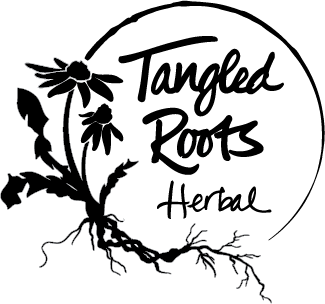Tea Blending 101: The Art & Science of Flavorful Herbal Teas
There’s something deeply magical about sipping a cup of tea you’ve blended yourself. It’s not just about the taste (though, yum) — it’s about creating something with intention, connecting with the plants, and making a remedy that’s as unique as you are.
If you’ve ever wondered how herbalists blend teas that taste good and do good, this guide is your beginner-friendly roadmap.
Why Blend Your Own Tea?
-
Control: You decide what goes in your cup — no fillers, no mystery dust.
-
Customization: Want something calming before bed? Or energizing without caffeine? You can tweak blends to suit your needs.
-
Connection: Working with herbs in this hands-on way deepens your relationship with them.
The Building Blocks of a Tea Blend
Think of blending like writing a song. You’ve got lead vocals, backup singers, and rhythm.
-
Base (50–70%) → The main herb. Usually mild in flavor + gentle in action. (Think chamomile, rooibos, or nettle.)
-
Support (20–30%) → Herbs that bring in specific actions or complementary flavors. (Peppermint, lemon balm, ginger.)
-
Accent (10–20%) → The sparkle. Strong flavors or energetics you don’t want to overdo. (Cinnamon, lavender, cloves.)
Tips for a Balanced Blend
-
Start Small: 3–4 herbs max at first. Complexity comes later.
-
Taste as You Go: Steep a pinch of each herb solo so you know what it adds.
-
Think Energetics: Is your blend warming, cooling, drying, or moistening? Match it to your body’s needs.
-
Write It Down: Nothing worse than creating the perfect blend and forgetting what you did.
Example Starter Blend: Evening Wind-Down Tea
-
2 parts chamomile (base, calming + floral)
-
1 part lemon balm (support, relaxing + citrusy)
-
½ part lavender (accent, soothing + aromatic)
Steep 1–2 tsp in hot water for 10–15 minutes. Sip, exhale, repeat.
Tools of the Trade
-
Mixing bowl + spoon
-
Glass jars for storage
-
Tea strainer or reusable cloth bag
👉 Don’t want to fuss with sourcing all the herbs? Our DIY Herb Kit has everything you need to start blending right away.
[Shop the Start Here Kit]
Beyond the Teacup
Here’s where it gets even juicier. The same herbs you blend for teas — chamomile, lavender, rosemary — have been used in spellcraft and ritual for centuries. Stay tuned, because later this month I’m unveiling our Spellwork Bottle collection: little jars of herbs, crystals, and intention you can work with in magical ways.
And if you’re thinking, I’d love to keep learning this stuff regularly, keep your eyes peeled for the upcoming Tangled Roots & Rituals Membership. It’s your ongoing space for classes, rituals, and community.
Final Sip
Tea blending doesn’t have to be intimidating. Start simple, trust your tastebuds, and let the herbs teach you as you go. Whether you’re here for the flavor, the wellness boost, or the little dose of plant magic — your teacup is the perfect place to begin.


